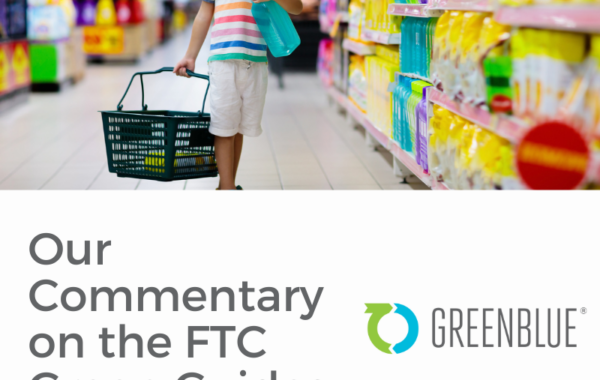February 20, 2018
Originally published in Resource Recycling
At the 2018 Waste Management Sustainability Forum earlier this month, the leader of a startup called Zipline presented an idea that was quite outside the realm of recycling but that could nevertheless help to inspire our industry’s sense of strategic thinking.
Zipline uses drones to deliver blood to rural hospitals in rural Rwanda. The company founder, Keller Rinaudo, said the idea started on a napkin with a pencil sketch and grew from there. Zipline leaders were repeatedly told the idea would fail, but today, four years after the initial concept was laid out, blood is being delivered on demand to hospitals all over Rwanda, and lives are being saved.
It’s time to let similarly bold, inventive thinking take flight in the world of recycling.
Our industry is at a pivotal point. The materials that sustained the recycling system in the past are gone or diminishing. Newspaper has all but vanished. Laundry detergent is now routinely delivered in pods. Plastic containers have been so successfully lightweighted that recycling entities must collect more to produce the same value. And an astonishing amount of product is now sold in non-recyclable flexible pouches.
Clearly, we’re now in desperate need of a “pencil sketch” to help us plan the future.
Danger in relying on standbys of the past
The notion of innovative ideas is always important, but it’s even more so right now because some recycling stakeholders seem to bent on looking backward. Some folks who spoke at the Waste Management event implied they want to return to the past and only collect what’s remaining of our diminishing historical mix of materials. They cite China’s import ban and stringent contamination limits as reason to pull back on our attempts to recover more.
It is a common reaction to defer to the lowest common denominator when facing uncertainty, but in this case, such a move could be a huge mistake. The concept reminds me of the financial strategy of saving one’s way to prosperity, which doesn’t usually work. By turning to abandoning innovative ideas about how to manage the waste stream, we lose critical mass and enter a rapid downward spiral. It doesn’t help that many of the commodity prices for recycled materials are extremely volatile and are currently being depressed by the low price of oil, a strong U.S. dollar and the Chinese market restrictions.
However, what everyone seems to agree on is the fact we haven’t invested collectively in our recycled materials streams. “We the industry” need to put real resources behind collection, sortation, reprocessing and the creation of end markets for recovered materials. How do we provide stable funding mechanisms to do this? Perhaps that’s the starting point for our pencil sketch.
Looking through lens of flexible film
We can use the example of flexible film packaging to highlight some of the industry’s current difficulties as well as the type of planning and action necessary to move the needle.
Flexible pouches have a low environmental footprint because they use a small amount of material to convey and protect products. Most are not recyclable today. The Sustainable Packaging Coalition, an organization I help lead, has a How2Recycle Store Drop-Off label for collection of polyethylene films for recycling, including a small number of qualifying PE pouches. This works as a collection system, but not all consumers are prepared to return their films and bags to retail stores.
How might we create a better way? There are a few pilot projects looking at the issue.
The Material Recovery for the Future (MRFF) project is trying to determine if films can be sorted and baled effectively with the addition of existing new technology to current facilities. At the same time, the Hefty Energy Bag program is now expanding to new cities where residents can put all their films and other low value plastics into a bright bag for collection with their recyclables. The bag allows the facility to separate the material easily from other more valuable materials.
Once we have solved collection and sortation we will need to focus on reprocessing. Today we have built good recycling processing capacity for some plastics (PET, PE and PP), metals and paper. We haven’t done a good job for flexible films. The multiple layers used in the packaging are there to provide performance and extended shelf-life. This makes mechanical recycling difficult. Recently new concepts around chemical recycling have been emerging. This will likely be critical to our ability to effectively recover films in the future.
I would suggest we need more pilot programs. We need to explore how we might reinvent collection and fund our sortation facilities to become more flexible and responsive to changes in consumer goods packaging.
Thinking in terms of more, not less
We need to collect more materials, not less, while at the same time reducing contamination. We need to think about how we can add foodservice packaging, small items, pouches and food waste into our recovery infrastructure. We need to continue to teach consumers what to keep out of recycling bins and what to put in.
What if we started over and designed new concepts for how we might collect, sort and reprocess based on an understanding of where we want to go and what we can realistically imagine the waste stream will look like? What is the “job” we want our recovery system to do? Is it only transactional or is there more?
These are big questions, and the answers won’t come easy. But unless we put pencil to paper – or a napkin – and think in expansive terms, we’re going to be stuck with stale ideas and diminishing returns on our investments.





